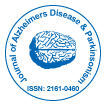Notre groupe organise plus de 3 000 séries de conférences Événements chaque année aux États-Unis, en Europe et en Europe. Asie avec le soutien de 1 000 autres Sociétés scientifiques et publie plus de 700 Open Access Revues qui contiennent plus de 50 000 personnalités éminentes, des scientifiques réputés en tant que membres du comité de rédaction.
Les revues en libre accès gagnent plus de lecteurs et de citations
700 revues et 15 000 000 de lecteurs Chaque revue attire plus de 25 000 lecteurs
Indexé dans
- Index Copernic
- Google Scholar
- Sherpa Roméo
- Ouvrir la porte J
- JournalSeek de génamique
- Clés académiques
- JournalTOC
- Infrastructure nationale du savoir de Chine (CNKI)
- Bibliothèque de revues électroniques
- Recherche de référence
- Université Hamdard
- EBSCO AZ
- OCLC-WorldCat
- Catalogue en ligne SWB
- Bibliothèque virtuelle de biologie (vifabio)
- Publons
- Fondation genevoise pour l'enseignement et la recherche médicale
- Euro Pub
- ICMJE
Liens utiles
Revues en libre accès
Partager cette page
Abstrait
Assessment of Hearing Impairment in Parkinson's Disease: Implications for Differential Diagnosis and Disease Progression
Roberta Di Mauro, Giulia Di Lazzaro, Tommaso Schirinzi, Federica Martino, Nicola B. Mercuri, Emanuela Fuccillo, Antonio Pisani and Stefano Di Girolamo
Background and objective: Non-motor symptoms (NMS) of Parkinson's disease (PD) are still underestimated and causative of disability and poor quality of life. Recently, it has been suggested that hearing impairment could be included into the spectrum of NMS, although both mechanisms and phenomenology are unclear. In this study we investigated the peripheral auditory pathway of PD, in patients with asymmetric rest tremor (ART) without dopaminergic denervation, and comparison with healthy controls (HC), aiming to detect differential alterations of cochlear functioning and medial olivocochlear system (MOC).
Methods: 23 PD patients, 9 with ART and 19 HC were assessed for auditory functions with clinical examination and Transient-evoked otoacoustic emissions (TEOAEs). PD and ART groups were also evaluated with Unified Parkinson's Disease Rating Scale (UPDRS) II-III and Hoehn and Yahr scale. One-way ANOVA analysis and Pearson's test were performed to measure differences between groups and correlations.
Results: TEOAE responses in PD patients were significantly lower compared to HC at 3 and 4 kHz, bilaterally. PD patients showed statistically significant lower TEOAEs at the same frequencies compared to ARTs. In addition, a MOC dysfunction in PD patients was observed. Conversely, no difference was found between ART and HC in all tests performed.
Conclusion: PD patients, differently from both ART patients and HC, show abnormalities of basal TEOAEs at the highest frequencies. Auditory dysfunction correlates to motor disturbances, suggesting an underlying dopaminergic pathogenic mechanism. Early recognition of hearing impairment may represent a tool for patient assessment and help in the differential diagnosis in ART patients.
Revues par sujet
- Agriculture et Aquaculture
- Biochimie
- Chimie
- Food & Nutrition
- Génétique et biologie moléculaire
- Géologie et sciences de la Terre
- Immunologie et microbiologie
- Ingénierie
- La science des matériaux
- Le physique
- Science générale
- Sciences cliniques
- Sciences environnementales
- Sciences médicales
- Sciences pharmaceutiques
- Sciences sociales et politiques
- Sciences vétérinaires
- Soins infirmiers et soins de santé
Revues cliniques et médicales
- Allaitement
- Anesthésiologie
- Biologie moléculaire
- Cardiologie
- Chirurgie
- Dentisterie
- Dermatologie
- Diabète et endocrinologie
- Gastro-entérologie
- Immunologie
- La génétique
- Maladies infectieuses
- Médecine
- Microbiologie
- Neurologie
- Oncologie
- Ophtalmologie
- Pédiatrie
- Recherche clinique
- Soins de santé
- Toxicologie

 English
English  Spanish
Spanish  Chinese
Chinese  Russian
Russian  German
German  Japanese
Japanese  Portuguese
Portuguese  Hindi
Hindi